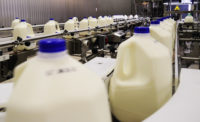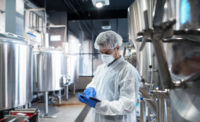Hygienic design for food processing facilities commonly focuses on new equipment and new facility construction. The selection of proper materials of construction, surface finishes, radii, welding quality, and other parameters is critical for good hygienic design. A broader holistic approach looks beyond design to include internal programs, policies, installation, cleaning, maintenance, and operational factors to achieve hygiene integrity.
Factors to consider
A food manufacturing company’s holistic plan should include all policies and programs that affect the cleanability and inspectability of the process and facility during its useful life. A company’s written policies and programs should provide requirements, guidelines, training, and resources for maintaining the hygienic conditions to produce safe food. First, the company must understand and comply with all applicable food safety laws and regulations and monitor for changes in the current regulations.
A written corporate hygienic design specification provides the foundation for procurement and installation of all new and used equipment. This specification may reference current hygienic design standards such as those from 3-A Sanitary Standards, the Baking Industry Sanitation Standards Committee, and the European Hygienic Engineering and Design Group.
Pre-fabrication design reviews should be conducted prior to equipment fabrication. Fabricators should be audited to ensure the fabrication facility and methods can deliver food-safe equipment.
Facility designs should be continuously reviewed for changes in the physical structure of the building. The company should monitor for changes in the traffic flow of people, equipment, products, and ingredients that could cross-contaminate and create food safety risks.
Air-handling systems, potable water supply, and product contact air need to be periodically tested to ensure hygienic conditions. Roof leaks should be repaired immediately. A facility pest control program also needs to be in place and managed by a licensed pest control professional.
Written cleaning and sanitizing protocols must be used and validated for all equipment and areas of the facilities. These protocols include recommended cleaners and sanitizers to use, cleaning methods, tools required, frequency of cleaning, and detailed cleaning steps. Periodic training and training refreshers are required for all sanitation personnel.
Maintenance personnel must be trained in hygienic design to ensure the plant and all its equipment are maintained in a hygienic condition. They must understand the need for repairs with noncorrosive metals, proper finish, and the requirements for FDA-approved elastomers. Operational good manufacturing procedures and quality control protocols must be followed during the entire production and packaging process.
A holistic approach to hygienic design will provide a food processing plant with a plan that meets the hygienic requirements to produce safe food.



